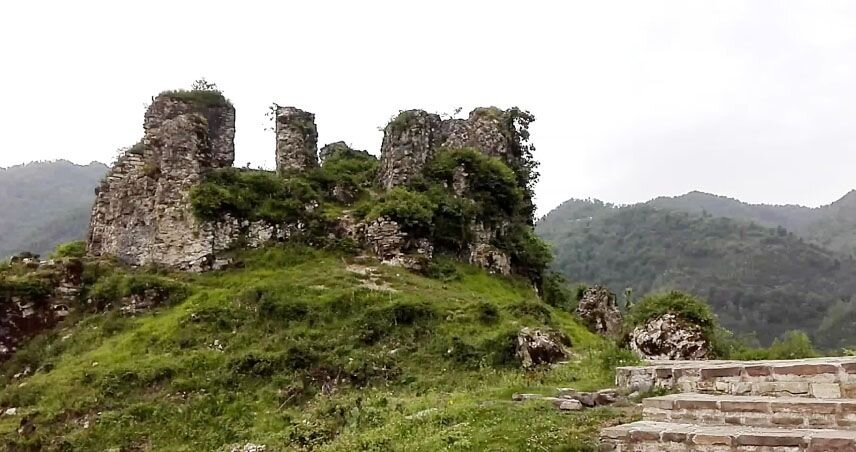Qale-Gardan, an isolated fort of the Iron Age

TEHRAN – There are ancient remnants almost everywhere on the Iranian Plateau, but Iron Age remains are mostly situated in the provinces of Khuzestan, Lorestan, Fars, and Kordesran and Kerman.
Qale-Gardan, which is now a crumbling ruined fortress, reportedly dates from a time between 2800 to 3200 years ago. The monument is named after a village of the same name in Rahimabad district of the northern Gilan province.
Nested on top of a hill, the fortress covers an area of 90 square meters and it is made of stone, mortar, and timber beams.
According to Prof. Ezzatollah Negahban (1926 – 2009), who was an Iranian archaeologist known as the father of Iranian modern archaeology, caves and rock shelters were particularly attractive living places for the hunter gatherers of the early Paleolithic period.
Those hunter gatherers mainly lived in bordering mountain regions, including the Zagros range on the west and the Alborz range on the north has meant that there were many cave sites which would have been suitable for early cave dwelling man.
Iron Age marks the final technological and cultural stage in the Stone –Bronze– Iron Age sequence. The date of the full Iron Age, in which this metal, for the most part, replaced bronze in implements and weapons, varied geographically, beginning in the Middle East and southeastern Europe about 1200 BC but in China not until about 600 BC, according to the Encyclopedia Britannica.
Although in West Asia iron had limited use as a scarce and precious metal as early as 3000 BC, there is no indication that people at that time recognized its superior qualities over those of bronze.
AFM
